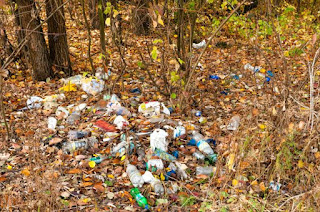Are you aware there is difference in taste between foods grown with chemical inputs and those grown grown without chemical inputs? Do you know they have different nutritional and health values too? If you are serious about your health and healthy living, I think you need to be concerned about the source(s) of your food. If you are the type that have secretly or openly desired to take control of your health by taking control of your food source then this article is for you. This is the concluding part of the guide to growing your own healthy food. I will now outline the other steps towards creating your own organic garden:
4. Choosing Plants
4. Choosing Plants
Choose plants that will thrive in your environment. Knowledgeable seed sellers in the market or other vegetable gardeners can help you to ascertain which types of plants do particularly well in your area and which will fare badly. Don’t forget Guide 1 as you choose the plants to grow.

You can start from seeds bought in a packet from or with seeds from the local market or from local gardeners in your area. Depending on the plant, the seeds may need to be started off in nursery before transplanting to the beds. Sow your seeds in rows to allow air to circulate in the soil which minimises fungus.
5. Tending to Them
5. Tending to Them
➧ Water – The optimum time to water your plants is early morning prior to sunrise, as the water will be available to the plants during the day when it is needed. However, this is not always possible especially for people who are not gardening full time. But it is a sacrifice you must make considering the purpose for which you are gardening in the first place. During the hot dry season, it is probably best to water in the early evening. This gives the plants enough time to dry out, but there is still the chance of overnight water uptake by the roots. But if you prefer to water in the morning during the hot dry season then start very early – before the sun is shining. Water your plants first thing in the morning for best results. The water won't immediately evaporate as the temperature should still be low. Avoid watering at night when it will be cold for the next few hours because the roots of the plants will be soaking overnight which can cause rot.
Aim the flow of water at the soil rather than the plants to keep the soil damp so that the plant can soak it up through the roots. Test the dampness of the soil by sticking a finger into the earth to decide if they need to be watered. If your finger is damp below the second ring on your finger it means that the soil is still okay. Then leave watering until next time.
➧ Weeding & Pest Control - When you garden organically there is no short way around weeding, it just has to be done. Keep on top of it by plucking out the whole weed as they appear.
The best way to control pests in your garden naturally is by growing a range of different plants to encourage insects that feed on pests into your garden. Praying mantis are one such example, by planting flowers that they enjoy they will feed on the pests that would otherwise devour your vegetable. Welcoming birds into the garden will also help keep pesky bugs from wreaking havoc on your plants.
➧ Fertilising - Mulch can be added to the soil to ensure that it is nourished along with reducing the need for water and decreasing the ability of weeds to thrive. Mulch acts as a protective covering over the soil locking in nutrients yet preventing weeds from thriving. Wood chips, grass cuttings, and dead leaves will decompose over time nourishing the soil in addition to keeping weeds at bay.

Do a thorough weeding before adding mulch to your bed and make sure you don't cover any new seedlings or they won't grow.
6. Harvesting
6. Harvesting
When you are harvesting vegetables and picking your fruit take a few from each plant at a time rather than focusing on just one plant.

Keep an eye on them so that you can cut the vegetables or remove the fruits when they are ready to be plucked as the more you harvest from a plant the more it will produce. Use scissors to harvest those vegetables with strong stem to prevent damaging the stem.














